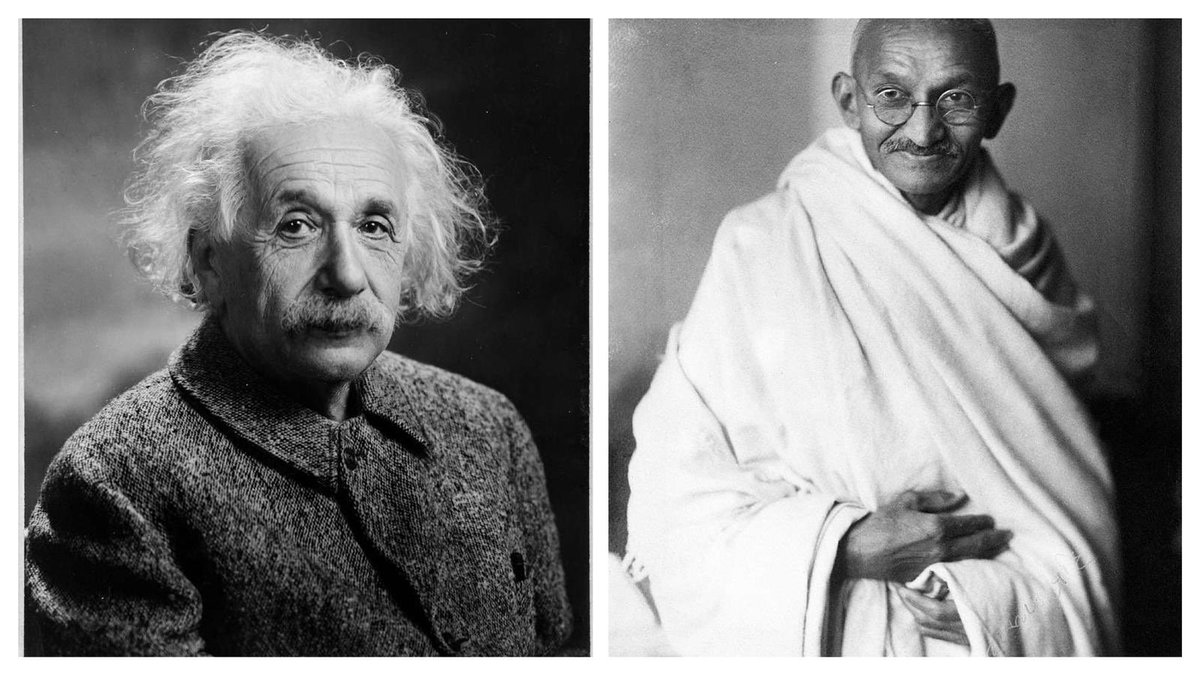
Mohandas Karamchand Gandhi, the pioneer of non-violent civil disobedience movement remained an uncharted figure worldwide until in 1930, a brave American journalist came to India in search of a story that ultimately unveiled one of the most revered global figures of all time.🧵1/ 

The British Raj’s resistance & censorship on print media made sure that India’s struggle for independence would not see the light of day on the international stage until Webb Miller from the United Press came to interview Gandhi during his famous Dandi march. 2/
The news of Gandhi’s 240-mile march to oppose the rule imposed by the British Empire that prohibited Indians to make salt in their own homeland brought special attention to Miller, so he decided to fly down to India to unravel the black box. 3/
Miller was an adulated journalist, known for his powerful penmanship and a former nominee for the coveted Pulitzer Prize. By the time Miller had reached India, Gandhi was already arrested. 4/
To witness the protest, he accompanied several thousand protestors to Dharasana salt works, walking in blistering heat. As he arrived, the demonstration was just about to begin. 5/
He first met Sarojini Naidu, who was marshaling 2,500 protestors, urging them on top of her voice not to resort to any violence at any cost. What unfolded next, shook Miller to his core. 6/
The salt deposits were surrounded by ditches filled with water and guarded by 400 native Surat police. Half-a-dozen British officials commanded them. The police carried lathis - five foot clubs tipped with steel. Inside the stockade twenty-five native riflemen were drawn up..” 7/
“From where I stood, I heard the sickening whacks of the clubs on unprotected skulls. The waiting crowd of watchers groaned and sucked in their breaths in sympathetic pain at every blow…There was no fight, no struggle; the marchers simply walked forward until struck down.” 8/
Miller later stated “In eighteen years of reporting in twenty-two countries, during which I have witnessed innumerable civil disturbances, riots, and rebellions, I have never witnessed such harrowing scenes as at Darsana.” 9/
“It was astonishing and baffling to the western mind accustomed to see violence met with violence, to expect a blow to be returned. My reaction was of revulsion akin to the emotion one feels when seeing a dumb animal beaten: partly anger, partly humiliation.” 10/
Being the only foreign correspondent at the scene, it was easy to track down Miller for the Government. Within a few hours of trying to send his report back to the United States’s office, he received an anonymous reply confirming that his telegraph had not been delivered. 11/
Refusing to back down against the threats, he used his diplomatic immunity as a shield and his deep-rooted channels to send the report to the United Press’s office. It was delayed but he couldn’t be silenced. 12/
Miller’s account of Dharshana later appeared in 1,350 newspapers globally that led to widespread criticism of the British Raj in India around the world. 13/
Winston Churchill later said the incident “inflicted such humiliation and defiance as has not been known since the British first trod the soil of Asia.” 14/
The historic report paved the path for nonviolent philosophy of resistance and unleashed the practice of mass civil disobedience movements across the globe. Martin Luther King Jr. later credited the salt march as a crucial influence on his own philosophy. 15/ 

Such was the impact of Miller’s testimony, the following year, Gandhi, a man who was almost invisible to the world outside India, became the first Indian to be featured on the Time Magazine cover. 16/ 

In these trying times of Chequebook Journalism, the world desperately needs a few Webb Miller, for their fearless pens to make a difference. 17/
Acknowledgement:
1. medium.com/@indebo/webb-m…
2. unl.edu/eskridge/cj394…
3. indianexpress.com/article/resear…
Image Sources:
1. Indian Express
2. Time Magazine
1. medium.com/@indebo/webb-m…
2. unl.edu/eskridge/cj394…
3. indianexpress.com/article/resear…
Image Sources:
1. Indian Express
2. Time Magazine
• • •
Missing some Tweet in this thread? You can try to
force a refresh














